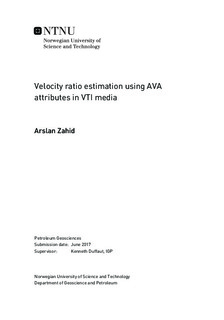Velocity ratio estimation using AVA attributes in VTI media
Abstract
Amplitude variation with angle (AVA) analysis is one of the fundamental tools for hydrocarbondetection and reservoir characterization. The background trend as a function of intercept against gradient for various ⟨Vp⟩/⟨Vs⟩ ratios are well defined assuming isotropic media only.However, how the anisotropy changes this background trend is not being investigated. Therefore, this study shows the effects induced by anisotropy assuming VTI symmetry onbackground trends, reflectivity by using the weak contrast two term approximation. Moreover,analytical expressions for the estimation of average Vp and Vp/Vs ratios from AVA attributes(A and B) are derived and then modelled using well and seismic data from Norwegian Sea forboth the isotropic and VTI media respectively.To accomplish this work, well log data, synthetic seismic CMP gathers and real seismic datawere used to calculate the intercept-gradient ratios which were then implemented to generatethe plots, background trends, modelling of average Vp and Vp/Vs ratios using the derivedexplicit equations. The modelled results obtained from the log data, synthetic seismic CMPgathers and real seismic data for the estimation of average Vp and Vp/Vs ratios are quiteadequate, good. Some of the major problems encountered in this modelling was the instabilitycaused by very low values of intercept-gradient ratios, resulting in very high values ofestimated average Vp and Vp/Vs ratios, approaching infinity in magnitude. This complicationwas solved by applying the smoothing function. However, some of the original well data wouldget removed during the process of attaining the perfect modelling outcome, thereby, suggesting the need to find the optimal parameters of smoothing filter function. Another difficulty came across when modelling of estimated data values was the frequency bandwidth problem which was investigated as well. Likewise smoothing, this also requires the need to find the optimal frequency bandpass filter.
